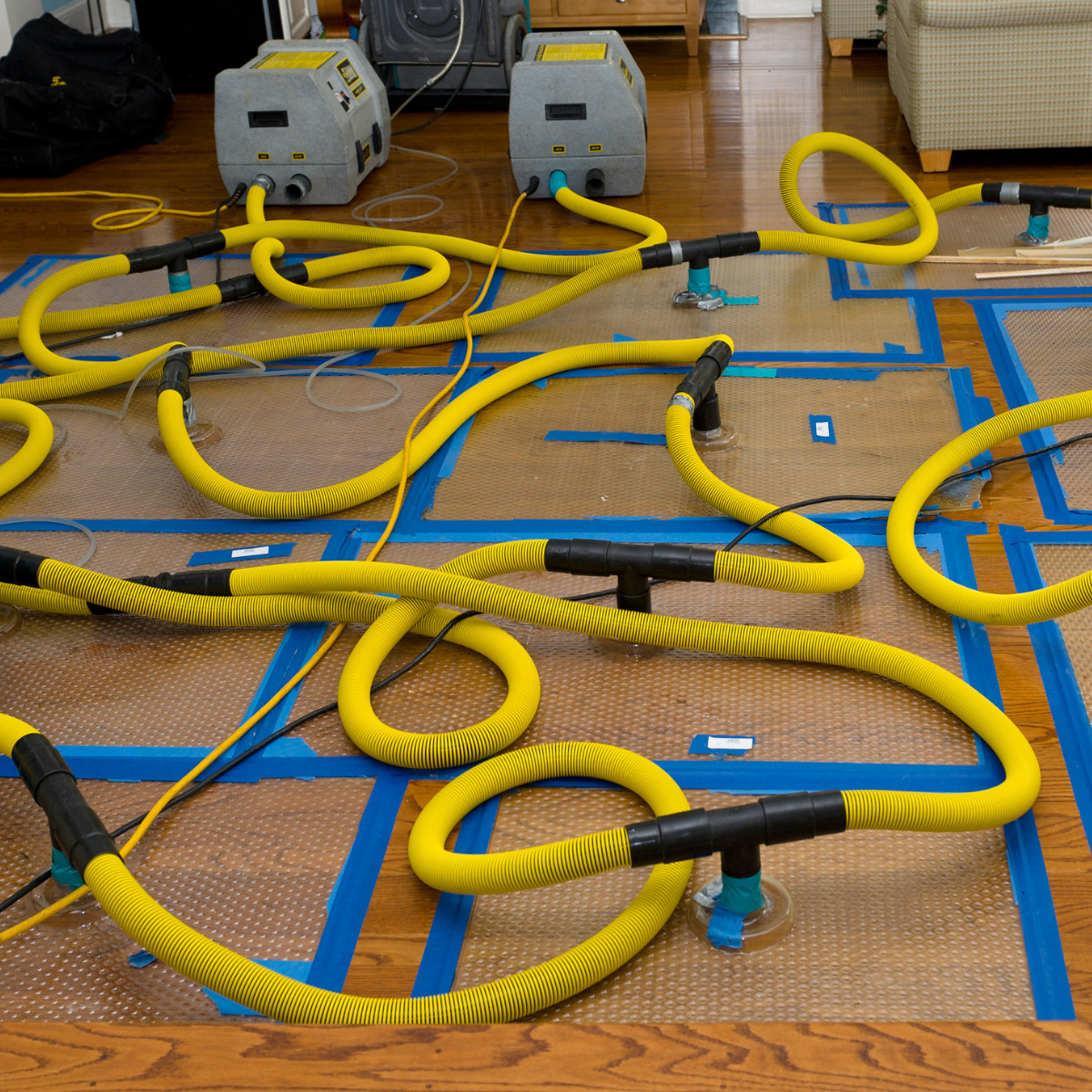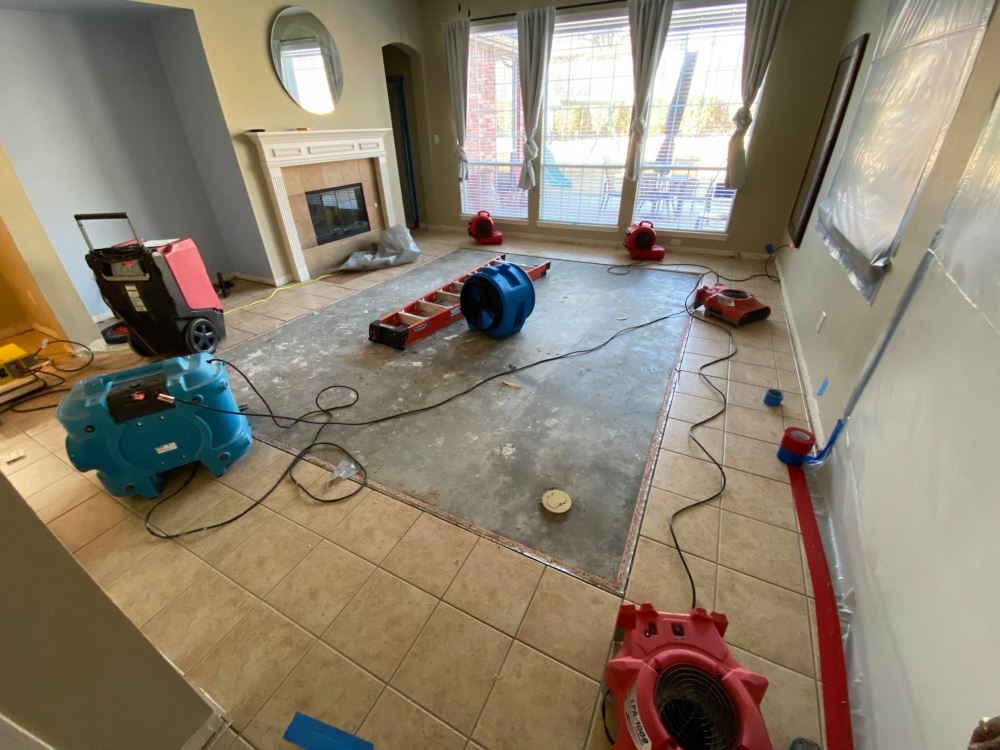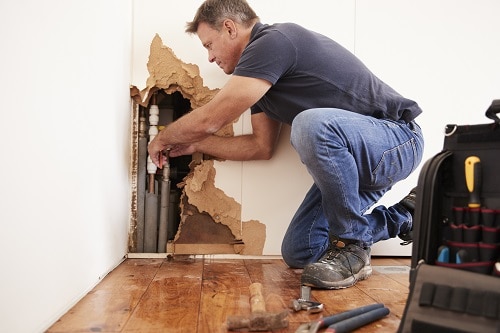Water Damage Restoration 101: Recognizing the Process and Expense
Water damage can strike suddenly, leaving home owners in a state of complication. Recognizing the repair process is crucial for reliable recovery. From reviewing the damage to choosing the appropriate company, each action impacts the total end result and expense. Factors such as the sort of water damage and necessity also play a substantial function. What are the details techniques made use of in repair, and how can one get ready for potential expenditures?
Kinds of Water Damage

Initial Assessment and Inspection

Water Extraction Techniques
Complying with the initial assessment, efficient water removal methods are used to mitigate damage and avoid more issues. These strategies include the use of customized equipment such as completely submersible pumps and industrial-grade vacuum cleaners - Mold Remediation After Water Damage. The choice of approach depends on the volume of water present and the type of products impacted. For standing water, submersible pumps are normally used for rapid removal, while vacuum cleaners are suitable for extracting water from carpets and furniture. Furthermore, progressed techniques like water removal mats might be utilized for hard-to-reach areas - Water Damage Restoration. The goal is to remove as much water as possible, minimizing the possibility for mold and mildew growth and structural damage. Motivate and effective water extraction is essential in the general water damage restoration procedure
Drying and Dehumidification Process
As soon as the water extraction is full, the drying out and dehumidification procedure becomes important to restoring the affected location. This phase generally uses industrial-grade dehumidifiers and air moving companies to effectively reduce wetness degrees. The dehumidifiers attract in wet air, eliminating excess humidity, while air moving companies circulate air to speed up evaporation. Monitoring equipment is usually used to track moisture and temperature levels, making sure excellent drying out problems. The period of this procedure can vary relying on the extent of the water damage and environmental variables. It is important to thoroughly dry all affected materials, consisting of wall surfaces, floor covering, and furnishings, to avoid mold growth and architectural damage. Appropriate execution of this step is essential for an effective remediation outcome.
Cleansing and Sterilizing Afflicted Locations
As soon as the drying out process is total, a complete first evaluation and evaluation of affected areas is crucial to identify contamination levels. Effective cleansing strategies and ideal items should after that be utilized to eliminate debris and spots. Sanitization and disinfection approaches are essential to assure that hazardous virus are eliminated, bring back the room to a safe condition.
Preliminary Assessment and Examination
Before starting any type of restoration initiatives, a comprehensive first analysis and evaluation of the affected areas are important for reliable cleansing and sanitizing. This process includes identifying the degree of water damage, figuring out the resource of the water intrusion, and assessing the products influenced. Assessors generally seek signs of mold and mildew growth, architectural integrity concerns, and harmed items. The evaluation additionally includes examining moisture levels utilizing specialized equipment to guarantee no covert water pockets continue to be, as these can result in additional problems. Recording the searchings for is vital for intending the next action in the restoration procedure. A detailed preliminary analysis enables remediation experts to devise a targeted approach for reliable cleaning and disinfecting, ultimately decreasing damage and health and wellness risks.
Cleaning Up Techniques and Products
Efficient cleansing and disinfecting of water-damaged areas require a range of methods and products customized to the certain products influenced. For porous surface areas like drywall and carpeting, extraction techniques are important to remove excess moisture, followed by deep cleaning with specialized detergents. Non-porous products such as floor tile or steel can be cleansed using commercial-grade cleaners that efficiently remove contaminants. Heavy steam cleaning is an additional efficient strategy, specifically for carpetings and furniture, as it makes use of heats to remove germs and mold (Flood Cleanup Services). Furthermore, environmentally friendly products are progressively prominent for their security and efficacy - Water Damage Restoration. Eventually, choosing the ideal cleaning methods and items not just guarantees instant tidiness yet also aids in avoiding additional damage and health and wellness dangers related to water invasion
Sanitization and Disinfection Approaches
When resolving water damage, appropriate sanitization and disinfection techniques are necessary to ensure the safety and health and wellness of the affected atmosphere. After first cleaning, surface areas should be treated with suitable anti-bacterials to get rid of pathogens, mold, and microorganisms that prosper in moist problems. Usual approaches include making use of EPA-approved chemical anti-bacterials, which can be applied via splashing or cleaning methods. In addition, ultraviolet (UV) light systems can properly sterilize locations by reducing the effects of microbes without harsh chemicals. The option of technique often depends upon the type of materials impacted and the extent of contamination. Ultimately, detailed sanitization not just restores a safe home however likewise helps prevent future wellness risks associated with lingering dampness and mold development.

Repair Services and Restoration Options
Examining the damage link triggered by water direct exposure is crucial for establishing the ideal repair work and restoration options. Home owners may deal with different concerns, including harmed drywall, distorted floor covering, and endangered architectural elements. Depending on the degree of the damage, repair services may entail changing areas of drywall, mounting brand-new floor covering, or reinforcing structural beam of lights. In cases of serious damage, total substitute of damaged products could be necessary. Furthermore, professional restorers usually advise using moisture meters to analyze covert wetness degrees prior to choosing the finest course of action. It is very important to act quickly to stop mold development and more degeneration. Picking the best alternatives not only restores the building but additionally ensures long-term safety and security and functionality.
Factors Influencing Restoration Costs

The degree of water damage directly affects the restoration sets you back property owners can anticipate to sustain. Aspects such as the resource of the water, the duration of exposure, and the afflicted products greatly influence prices. For example, clean water damage from a busted pipeline is usually much less expensive to recover compared to damage triggered by sewer. Furthermore, the degree of contamination determines the need for specialized cleaning and disposal solutions, further boosting expenditures. Geographic location additionally plays a duty, as local labor rates and availability of repair solutions can differ. Finally, the seriousness of the feedback impacts prices; quicker treatments generally cause decrease total expenditures by avoiding additional damage. Understanding these variables is essential for house owners when approximating repair prices.
The 3 key kinds of water damage are classified based on contamination levels: clean water, gray water, and black water. A detailed initial evaluation and assessment are crucial actions in the water damage remediation process. For standing water, completely submersible pumps are usually used for quick elimination, while vacuum cleaners are excellent for removing water from rugs and upholstery. The level of water damage directly impacts the reconstruction costs house owners can expect to sustain. Clean water damage from a busted pipe is normally less expensive to restore compared to damage caused by sewage.